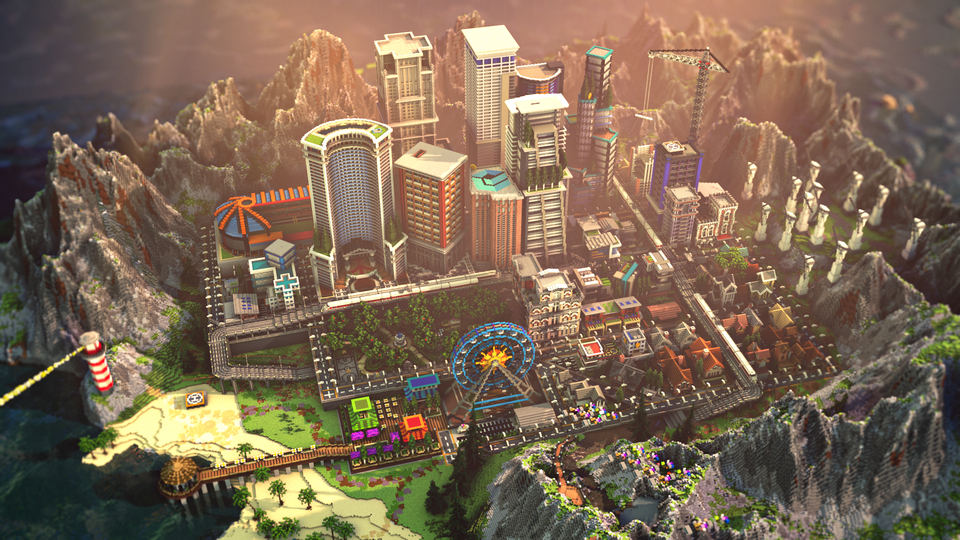Every week we simplify the market into key points so you can stay up to date on market trends, upcoming drops, top project guides and much more!
BY Jex Exmundo
August 02, 2022
Following Minecraft’s outright ban on in-game NFTs, some blockchain-based projects have been forced to find new homes. Case in point: NFT Worlds, a beleaguered metaverse gaming project that once enabled users to mint, buy, and trade various Minecraft-compatible 3D worlds. With Minecraft’s ban in place, NFT Worlds’ proprietary $WRLD token immediately tanked in value, exacerbating the effects of an industry-wide downturn.
NFT Worlds saw this potentially-catastrophic news as a rallying call. Like many others in this bear market, the company has no other choice but to keep building. In a lengthy public statement, the NFT Worlds team announced they are now in the process of creating their own take on Minecraft, complete with “the modernization and active development Minecraft has been missing for years.”
But, this raises the question: Can NFT developers take on a project as vast in scope as Minecraft?
According to the NFT Worlds team, they’ve already started to bring together “the top visionary developers within the Minecraft development ecosystem” to work on the project. In addition, the team cites support from a thriving community and “a warchest of funds to sustain us through the process.” Considering these resources, the question isn’t if they can develop a viable Minecraft competitor to host their audience’s hand-built metaverse experiences in the future, but when.
Despite its trappings as a simple, kid-friendly survival game, the infrastructure that’s enabled Minecraft to balloon into its current state won’t happen in a few months. Indeed, even an experienced team of developers might need years to create and roll out such a complex architecture. While the core game has been remade with an estimated 500 lines of code in Python, other features key to the Minecraft experience will present any would-be developer with a unique set of challenges — for example, procedurally generated assets, infinitely recurring worlds, and a flexible set of tools for creators.
Making a Web3-enabled game similar in spirit to Minecraft is going to be a herculean effort just to pull off, but it’s important that the NFT Worlds team take their time. Exactly how long is anyone’s guess, but for context, The Sandbox — also a voxel-based game centered around player creativity — spent four years in development before the launch of its alpha version.
Generally speaking, rushing the development process of any kind of game, Web3 or otherwise, does not bode well for the quality of the end product. Just look at the mainstream gaming industry for some notable examples of games released in unfinished, unpolished states to hordes of angry players: 2021 had Battlefield 2042, 2020 had Cyberpunk 2077, 2018 had Fallout 76 — the list goes on.
Even with the recent policy changes, worlds players have created will live on in Minecraft. They are still allowed to operate and can be played, according to the NFT Worlds’ press release. But it will no longer integrate blockchain-based functionality. Additionally, the launcher and play pages for NFT Worlds will continue to stay up and be developed to introduce new non-crypto player-attracting features while the coming game platform is under development. Still, NFT Worlds will have little more to cling onto than the idealism of its player base until the alpha of its Minecraft competitor eventually launches.
“Make no mistake, this is a web2 vs web3 battle,” NFT Worlds’ press release said. “It is a battle between two different visions of the future of the web: one that prioritizes shareholder value and profit margins above all else and one that prioritizes the spirit of innovation through independent creators. It is both a philosophical conflict over what the Internet represents, and a technological struggle over who will have ownership of digital assets.”
Although a touching mission statement, there’s room to wonder just how much NFT Worlds’ initial model actually did embody “the spirit of innovation.” There’s no doubt that NFT Worlds’ reported 100,000 users employed a fair share of creativity in building out new game modes and worlds using Minecraft as their canvas, but we can’t fully say the same for the project heads that precariously rested all their hopes on what is, at the end of the day, someone else’s game.
In NFT Worlds’ official documentation, this concern was addressed head-on. Why Minecraft? Touting over a decade of experience modding and building on Minecraft as an open-source platform, the NFT Worlds team stated, “When we started NFT Worlds, we knew that in order to compete in the rapidly expanding NFT metaverse gaming category we’d need to bootstrap our vision using an existing open-source gaming ecosystem to create the thriving community driven world development, community spaces, community created games and interconnected worlds that we envisioned.”
“We didn’t want to have to ‘reinvent the wheel’ by creating our own unproven game from scratch, while also having to innovate on the NFT integration & decentralized metaverse side of the platform we envisioned. This would take far too long to deliver on.”
Here’s hoping the forthcoming game lives up to NFT Worlds’ vision of what Minecraft should’ve been all this time. There are many disappointments in the wake of the original game owners’ decision, but a bright side remains: NFT Worlds will have more than enough time to realize their vision of the Minecraft experience on their own terms.

